Fears
As our first editorial, we decided to cover the topic of freshman fears. We had three freshmen on our staff share what made them anxious about high school then opened up conversation to all the reporters to talk about what they were scared of. There are three main categories that all fears fall under: the social, logistical and the future.
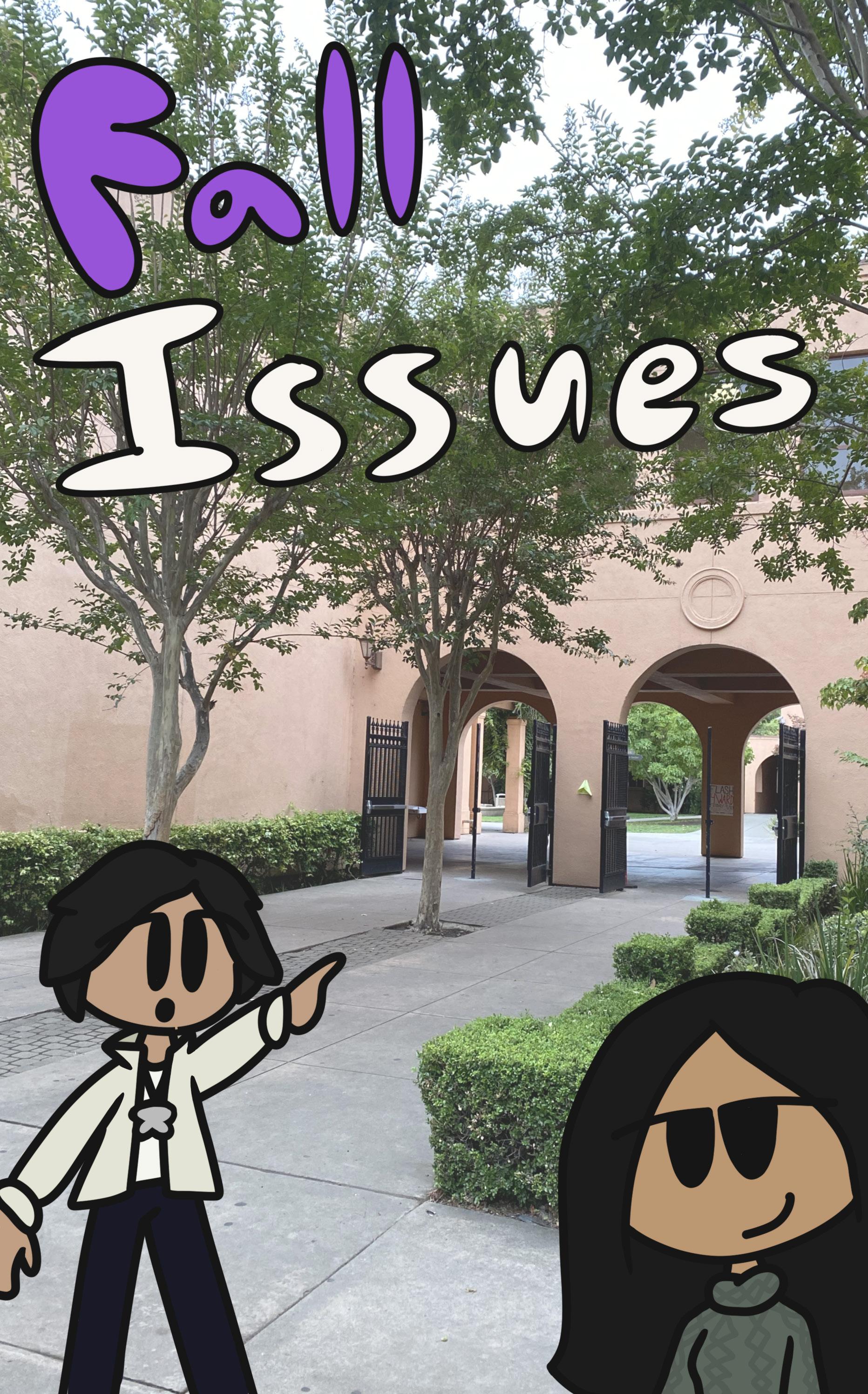
RAVEN REPORT October 2022 Sequoia High School ravenreport.com 2 Supply Prices Are Out-of-Pocket 3 Why the Phone Zone? 4 Schedule Setbacks 5 Maximum Capacity Classrooms 6-7 Freshman
8 The Lunch Line Crisis 9 Transportation Troubles 10 Clash of Classes 11 Our Campus - On Shaky Ground @ravenreport
Supply prices are out-of-pocket
With the start of a new school year comes back-to-school shopping, a task many students
supplies still isn’t enough, teachers are able to apply for grants from the Parent Teacher Student
huge help. As with the grant, actually, now I have a classroom set of calculators, which is vital for doing chemistry, and not
that you can write off on your taxes, which isn’t a huge help, but it’s something.”
Teachers can also look for
probably $100 to $200 a year depending on what I’m trying to do,” IB Applications teacher Kayla Hackmann said. “I usually continue buying things like pencils for students throughout the year. There are places where teachers can get really good discounts on things like that.”
Many supplies, including the ones that need the most replenishment, are supported through teaching departments.
“For the math department, our system is just kind of like we tell our department chair what supplies we want, what we need, and then an order is put in,” Hackmann said. “Everyone is mindful of trying not to ask for too much.”
“Most of the essentials that I need, if I need them, I could order that through the department. So if it’s like pencils, if it’s like push pins, if it’s like paper, all of that can be covered by the department,” Bustos said, echoing sentiments similar to Hackmann.
When what the department
“I remember having to fill out a Google Form with some information about the cost, how much of this money I needed, and why I needed this money,”
many students have calculators already, because they don’t
Although grants are accessible for some, there are a lot of obstacles for “You have to have those writing skills, and you have to have the time to write the grant to get the money,” Bustos said. “In a lot of cases for new teachers like me, I don’t necessarily have either. I don’t have a lot of grant writing experience and I don’t really have a lot of time to look for grants. So I may just be inclined to just spend some money or even if I just don’t know what grant opportunities
While not making a huge difference, tax write-offs, which are expenses that can be deducted from your total tax bill, can also help teachers. The limit for what can be written off is between $100200, amounting to less than what the average California teacher spends annually.
“[Teachers] can include a certain amount of classroom


cheaper purchasing options in order to lessen their expenses. “Goodwill is a wonderful resource because they have shelves of miscellaneous items,” Bustos said. He bought a light up book for his classroom that he keeps on his desk and turns on when the main lights are off. “It’s funny, because some people might not call that a school supply. But the amount of joy and interest it’s brought to students in class [...] it’s like a nice light when I turn the lights down. I can leave it on so people walking by in the hallway can see that I’m in the classroom.”
Teachers often have good teacher-to-teacher relationships with one another, so they don’t always need to buy their own supplies.
“We usually discuss with other teachers, we ask around, maybe some other teachers already have the stuff and [ask] if they need them. So there is a very good collaboration, we share many, many tools,” Love said.
“I’m with the social studies department and with the Digital Arts Academy, and, you know, I’m getting reminders that if I need something, I can just ask for it,” Bustos said. “I’ve even shared some of my wildest dreams of what we would do over the year, and other teachers are making suggestions on how [...] we could spend some money to make it even more extravagant [...] and memorable and just really engaging. That’s been wonderful to have that support and those suggestions and not feel like I have to reel it back.”
However, not everything Bustos has bought for his classroom can be classified as a standard school supply.
chemistry teacher Roberta Love said. Her grant was crucial for the class to function. “It was a
supplies as a tax write off,” Hackmann said. “I’m usually right around the maximum amount
“I would say I think everything is sort of like trial and error,” he said. “I don’t know how students are going to react to it. I don’t know if it will contribute to a better classroom environment. So I bring it out, I see what I could do with it, I see if it brings joy or brings interest, intrigue and [...] tranquility to a classroom. I think all those are essential to having a great time at school.”
by Sasha Efimchik
2 October 2022Fall Issues
Haylee Huynh ~ Sasha Efimchik ~ Matthew Caesar ~ Collin Liou Co-Feature Editor ~ Staff Reporters
“I don’t have a lot of grant writing ex perience and I don’t really have a lot of time to look for grants. So I may just be inclined to just spend some money or even if I just don’t know what grant opportunities there are. ”
Jesse Bustos, American Government and Modern World History teacher
[Teachers] can include a certain amount of classroom supplies as a tax write off. I’m usually right around the maximum amount that you can write off on your taxes, which isn’t a huge help, but it’s something.”
Kayla Hackmann, Flex coordinator and IB Applications teacher
Art
On average, California teachers spend $664 on school supplies annually. Economic Policy Institute (EPI), 2019
Why the phone zone?
Stricter phone policies have swept through Sequoia, intended to prioritize learning through the enforcement of better habits.
Some are supportive of stricter policies, while others are against the change. Last year, teachers were much more lenient with phone policies because everyone was transitioning back to an inperson learning environment. However, teachers noticed how much students used phones in class last year and decided to enact stricter policies.
Distance learning increased student phone usage substantially. Zoom class was often less engaging for people and with increased accessibility to phones, phone usage increased. It was so easy to use phones in a Zoom class and students became accustomed to it. Now, students are carrying that behavior over while in person.
“We abandoned you children to screens, and we said [it was the] only way you can get contact with the outside world,” math teacher Suba Ramanathan said. Some students have become addicted to their phones, a habit built up during quarantine, which is impacting their learning.
Jessica Magallenes, chair of the science department at Sequoia, has students put their phones on silent and put them into phone pockets at the beginning of class. This policy is the same across the entire science department because teachers share the same sentiment about phone policies
Magallenes said. “We’re showing you it’s possible to have time without your phone and maybe realize how productive class time can be.”
That’s why Magallenes frames the use of phone pockets as a way of helping students. When students instinctively go to grab their phone, they can’t.
Another reason teachers use phone pockets is to increase social interaction. When students have easy access to their phones they just go on them during breaks, giving the signal that they aren’t available for a conversation. Without access to phones, students are forced to interact with each other. Because of distance learning students didn’t have the same opportunities to talk to people and make new friends, while is why Magallenes believes it’s so critical to increase that social interaction this year.
“If we’re used to communicating in text, it makes it harder to communicate
anxious about is not having my earbuds,” senior Jeovanny Carlos said.
Math teacher Suba Ramanathan has an understanding of the use of phones and earbuds for stress relief but also thinks music can be a disconnect from school and human interaction.
“I have kids who cry before a test. And if they tell me they need to put on music and listen to it, like, go for it. Whatever makes you less sad today,” Suba said.
For other Sequoia students, they don’t really seem to have been affected by the phone pockets. Some students simply don’t care about the new restrictions.
“It hasn’t really changed anything, because normally I just have it in my pocket and it wouldn’t really do anything,” sophomore Alex Pigot said.
Despite having his phone put on the wall in some of his classes this year, not much has changed about Pigots’ usage of technology in class. Especially because it hasn’t caused any distractions in his previous year at Sequoia.
“I have never been in trouble for using [my phone]...I feel like I have enough self restraint not to use it in class,” Pigot said. “If I do, it’s normally when the teacher says it’s a break in class…that’s what I did last year and it worked for me.”
For Pigot, having his phone in class has never been an issue for him, hence why he doesn’t agree with these new restrictions. Pigot’s ideas also enforce the lack of trust the school has with their students.
wanting to be consistent. Last year, Magallenes used a warning system when it came to not using phones. She didn’t like it because it created tension between her and the students.
“[Warnings] aren’t equitable,” Magallenes said. “I don’t see one person in the back of the room. There’s room for arguing and I just wanted to take that off the table.” With phone pockets, everyone gets the same treatment.


But phone pockets weren’t just implemented to be equitable, the main reason was to improve the educational experience for students. Students got used to being on their phones while in class during distance learning and habits are hard to break.
“Our observation is that many teenagers can’t stay away from their phones on their own,”
verbally,” Magallenes said. “So communication is a skill that I want us to practice.”
While students may not like having to put their phones away, others do share the same mindset as teachers.
“I feel good about [the new phone policies], it makes it so that people are actually focusing in class,” freshman Amar Evans said.
Most of Evans' classes use phone pockets and when asked if phone policies causes stress he said, “I feel like you forget about it.”
On the otherhand, stricter phone policies often take away the ability to listen to music while working which can make some students very anxious and limit their productivity.

“The real thing that I’m
This idea that phone policies are not ideal is also supported by teachers. Some believe that they take away the opportunity for students to be more responsible for their belongings.
In other words, the phone pockets don’t teach the students to put the phone down themselves. Instead the school insists on taking the phone away without giving students a learning opportunity for responsibility.
“The school did provide me with these number hanging bags [phone pockets] in the classroom. But I really don’t believe in that, because that makes me responsible for an action that should come from the students themselves,” Suba said.
Art by Ethan Butt
October 2022 Fall Issues 3
Vivian Krevor ~ Alex Cottrell ~ Ethan Butt ~ Donovan Kervick Arts and Entertainment Editor ~ Staff Reporters
“ We’ve trained you for two years to only look at your screens. ”
Suba Ramanathan, Math teacher
“ We’re showing you it’s possible to have time with out your phone and may be realize how productive class time can be.”
Jessica Magallanes, Science teacher
As the new school year kicks off, schedules are a popular subject across the campus.
Although the process of making
Schedule setbacks

and changing schedules appears straightforward, it can be a demanding and tedious task for counselors.
The school policy is to pass out schedules for students in grades 10 - 12 the afternoon before school starts, and on orientation for freshmen, but the process of making them starts long before.
After students meet with their counselors in the spring and make their course requests for the next school year, student schedules and the master schedule are generated
through a computer. However, this can create many issues such as overfilling classes or putting a student in more than one of the
be changing students’ schedules during the school year because we understand that it can be very impactful for students and teachers, so we always want to minimize it.”
But with over 2000 students and only six counselors at Sequoia, it might not always end up perfect.
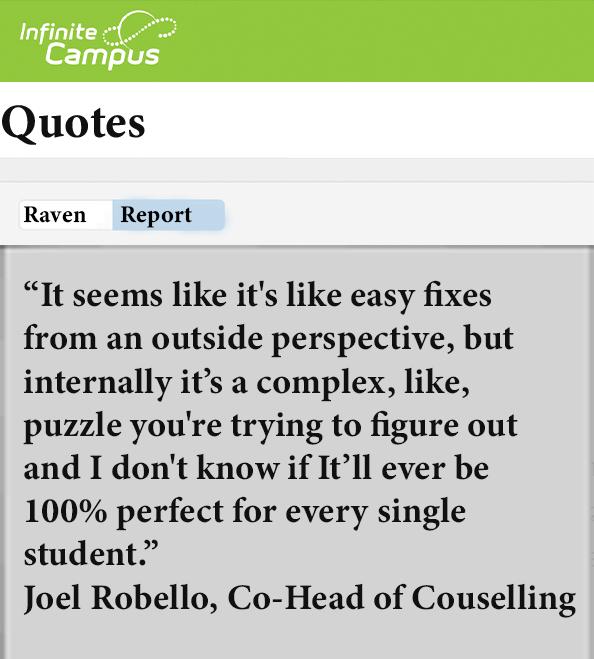
schedules are changed is because of over scheduled classes.
and they overscheduled the class,” Junior Cole Gwinner said. Gwinner moved from zero period history to first period history to resolve this issue.
be disadvantageous for students who were adjusted to their previous schedule and classes.
focus [in zero period],” Gwinner said, “I really liked having the free first, it was an opportunity for me to get ahead on schoolwork.”
“I don’t think it’s smart to publish schedules like a day before school starts, maybe a little bit earlier is better, because it’s easier for the teachers, the counselors and for the students,” Bahl said.
encourage students to put thought ahead of time into making sure they sign up for classes that they will be happy with, to minimize any complications that may happen later on when the options to adjust the classes are narrowed.
same course.
During the spring, as well as the two weeks prior to school starting, counselors try to accommodate and fix any issues that may have occurred since the schedule was made. These may include dropping a class, the registration of new students or movement between class levels.
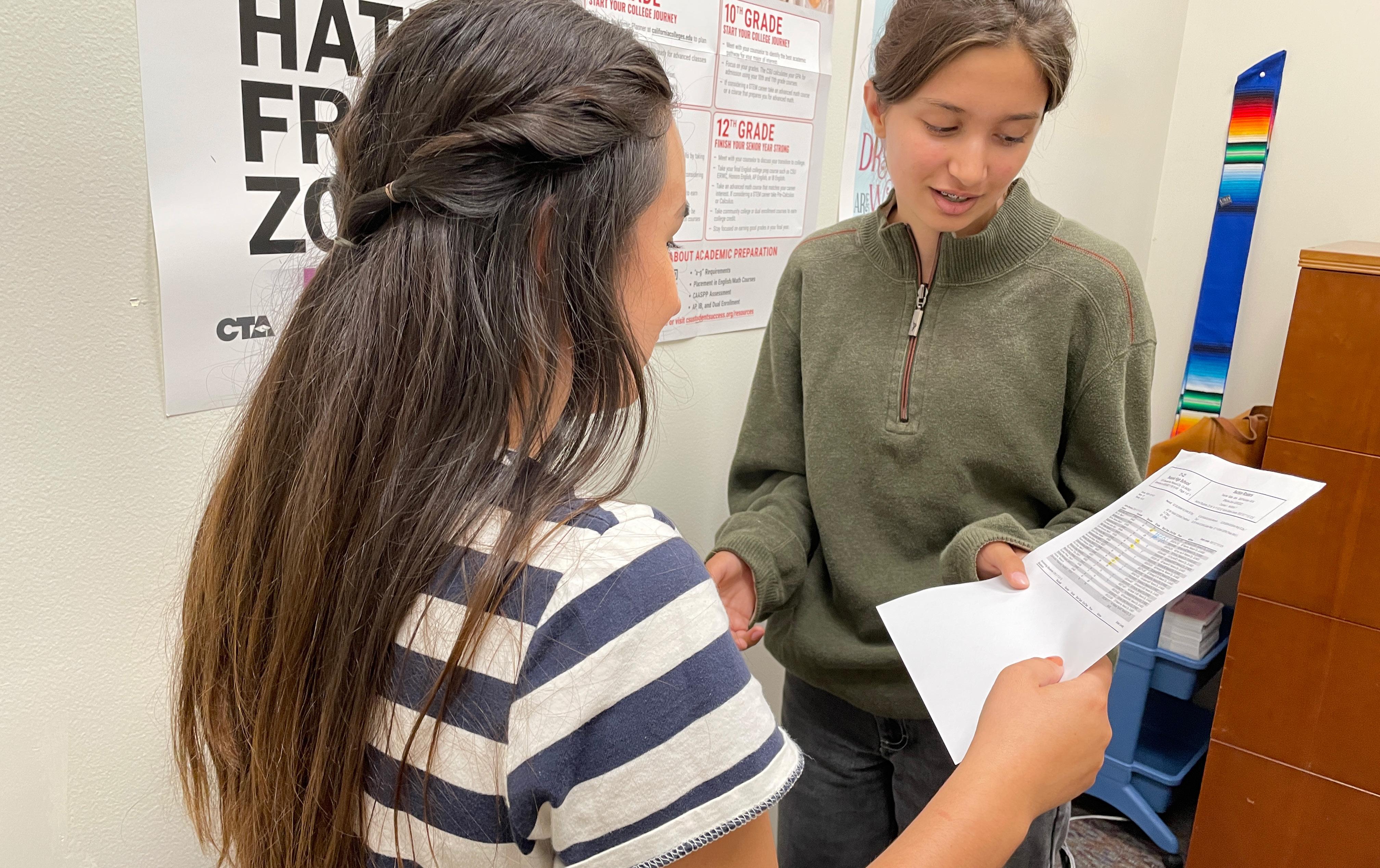
“I think it’s largely issues like that, making sure that we really try to make sure every class is balanced,” counselor Cynthia Wilde said. “We don’t want to
been a source of stress for some students. In the spring, sophomore, Meenal Bahl requested Intermediate Dance and Digital Journalism, unaware that they were both going to be first periods. By the time she realized, there was not much time or room for changes.
year suck, but I was excited to take journalism and I was pretty bummed I couldn’t,” Bahl said.
choice between the two in a short amount of time, a decision that would affect the rest of her school year.
4 October 2022Fall Issues
David Raymond ~ William Lampe ~ Sarina Sanghvi ~ Lucia Kitching Sports Editor ~ Staff Reporters
Art by Sarina Sanghvi
Joel Rebello, Co-head of counseling
Counselor Emilia Flores (left) discusses scheduling with Anjali Govoni (right).
Maximum capacity classrooms
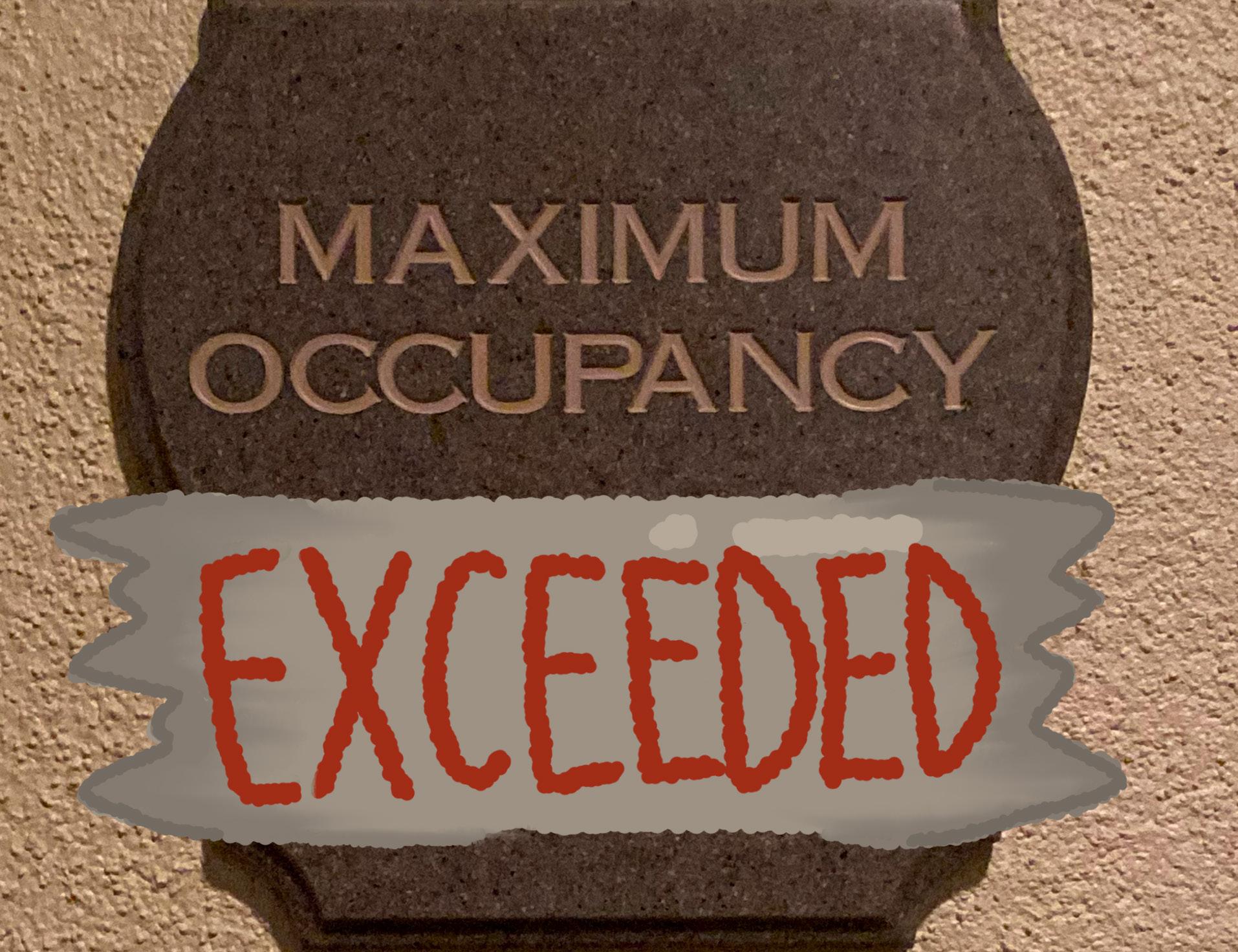
Starting the 2022 to 2023 school year, classes at Sequoia including, but not limited to, IB History of the Americas and IB Psychology were overfilled with students. These classes dealt with a lack of supplies and space, causing teachers to have a harder time connecting with students. Sequoia administrators helped to lighten the issue by changing schedules of both staff and students to reduce the size of some classes.
Over-enrolled classes create problems for students and can be intimidating. They might have a harder time asking for help, understanding the subject or getting to know their classmates.
“When classes are so large, it is very difficult to form close relationships with the students,” IB History of the Americas and Theory of Knowledge teacher Karin Zarcone said.
Students assigned to overloaded classes were impacted by a lack of school resources.
Reflecting on their first-day experience in IB Psychology, junior Jaden Chan said that there was a lack of school supplies for the students present.
“I was actually really surprised, we didn’t have enough desks in the room for the amount of people that were there,” Chan said.
Chan and several other students were rescheduled out of the class three weeks into the school year due to the lack of space and over enrollment.
“I’ve joined a Human Bio class, mostly because it was the only one open that I was interested in,” Chan said.
Administration tried to give
the option for students to drop out, but when that initiative didn’t come to fruition, they were forced to remove people.
“I did see there was an email sent out saying ‘if you don’t mind being put into another class, email your counselor,’ and I didn’t because I thought I’d be able to stay. But then obviously, I was not able to stay in the Psych class [and I was removed soon after],” Chan said.
The new schedule changes proved to be disruptive for students. Starting a new year in high school is already a stressful time and the sudden schedule changes can add to the anxiety.
“I don’t know much [Sequoia counselors] can do during the school year [...], but if they were able to figure something out before the school year started and avoided what sort of problems that switching classes causes, [that would have been helpful],” Chan said.
Over-crowded classes present additional difficulties for teachers such as scheduling conflicts and class planning.
“At the end of the school year, I plan out the next year- like every day. I like schedules and when that changes three weeks into school, it is very disruptive,” IB History of the Americas teacher Kathleen Banister said.
Many Sequoia teachers are required to plan out their curriculum and with students being suddenly removed, it can completely change the pace of the class.
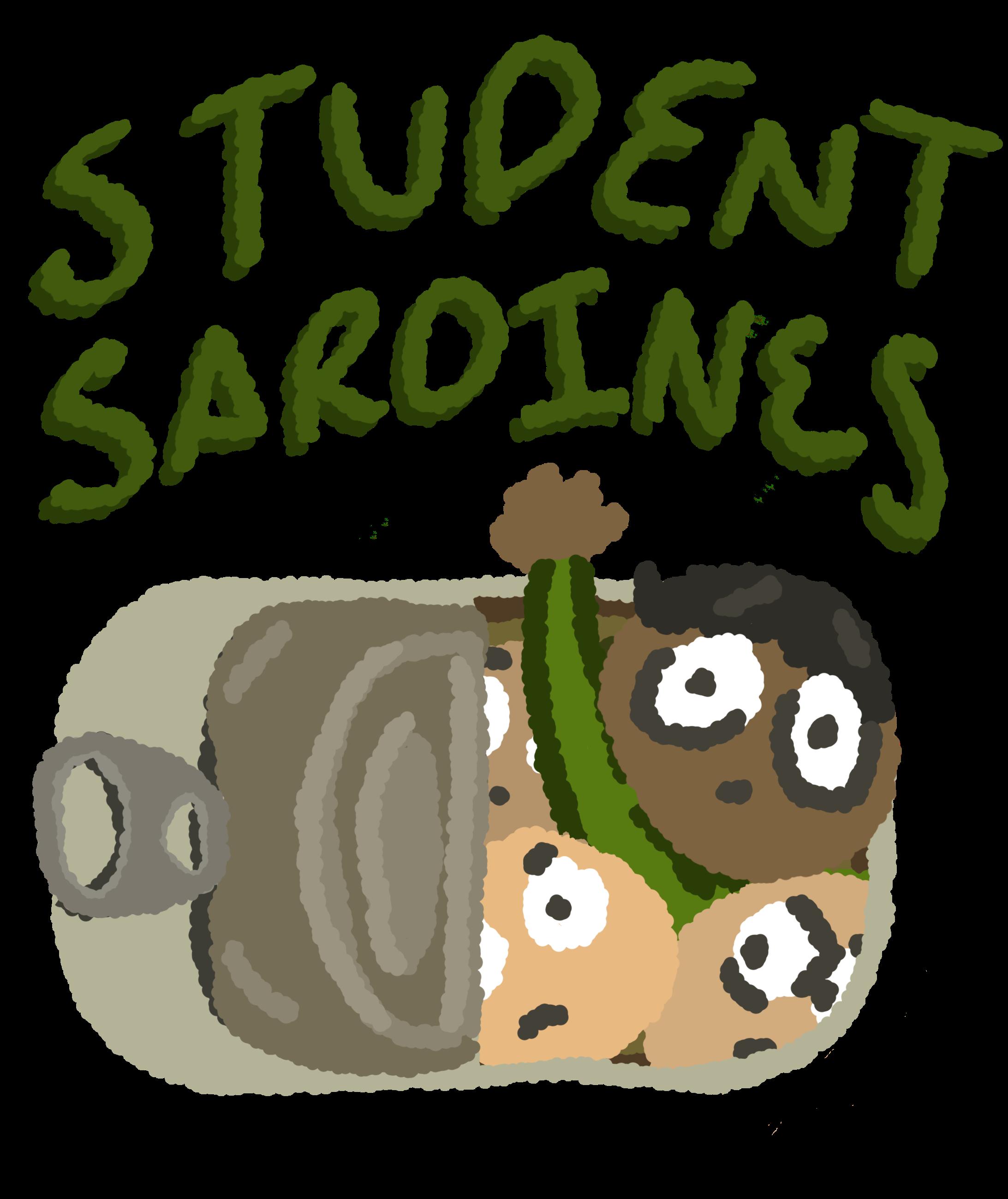
“In my dream world, I’d love to have only 30 students in a class. Realistically, IB classes are about
35. I wasn’t expecting 38 to 39. It’s hard to form relationships with students if there are 39 of them,” Banister said.
Having more students widens the communication barrier from student to teacher, making it harder for student-teacher connections. Erin Cespedes is an IB Psychology teacher who had students removed from her class due to overfill.
“Losing students is always hard. Even though it had only been a week or two in class, teachers work hard to get to know students and it’s sad to see them go.” Cespedes said.
There is usually some balancing between classes that happens in the first weeks of the semester. 2022 was unusual as most classes in the History department were
over-enrolled, resulting in less scope for balancing enrollment. Recently there has been an added section of IB Year 1 History, which balanced the classes to around 30 students.
“Normally there can be some shuffling with students to balance out the numbers, but all of the teachers teaching the same subjects - IB History Year 1 and Year 2 - all had giant classes, so they were already ‘balanced,’” Zarcone said.
There’s more preparation and grading work for teachers in large classes, individual studentto-teacher communication is reduced and teachers work to adjust with more pair and group activities to support student interaction.
“The other challenge with a large class is just having enough time for one on one student support,” Cespedes said.
There is some flexibility with teachers who are trained to teach multiple subjects that some other teachers may not have. Karin Zarcone is teaching more subjects in the Social Sciences department this year. It’s not all bad news as Zarcone says she is “excited to change it up a bit and work with different colleagues.”
How schedules are created doesn’t make fixing overfilling any easier since they are decided by how many students can fit into a course, and how many teachers are available to teach it.
“In the spring when we go in and we ask students to put in the classes that they need… all of those [class] requests, then go into the master schedule, and then we can see how many requests actually go for each class. That’s why we ask students to select the classes that they’d like, and to put alternates, so that we can ensure which for them to get a class they actually enjoy,” counselor Emilia Flores said.
Unfortunately, this creates uncomfortable situations for both teachers and students when more students want to take a class than there is space to fit them.
“The number of students in a class is a balance of the particular
class, the number of students who want to take the class, and the needs of the students in the class,” instructional viceprincipal Kristin Stout said. “We work to keep core ninth grade classes smaller where possible, and classes like choir, orchestra, band, and PE can have higher maximums.”
Though this isn’t the only cause for the issue; some courses are more affected than others because of schedules being put together differently, with more or fewer students to allow for changes to schedules at the start of the year.
“Some classes are loaded higher than others, knowing that some students will drop the class. For example, IB History can have higher numbers to begin with while U.S. History will have smaller numbers to accommodate for drops,” Stout said.
Although some of overfilling is intentional, the administration is aware of the impact it has on students and has put in efforts to help reduce it.
“We just opened another section of IB History to lower class size and collapsed two smaller classes in another area,” Stout said. “For IB Psychology, which is an elective, we gave alternatives to about nine [juniors] and told them they could take the class as seniors.”
Overfilled classes have affected many students at Sequoia. Students are less comfortable, less socially connected and have less resources while teachers have a harder time engaging with their students and have to take on more work. However, Sequoia counselors are doing their best to manage this issue by changing schedules and reducing class populations.
“We’re trying to still balance classes. So that is still happening, which is why we tell students to keep checking your schedule every night because it may change. Like we said, some classes are opening and then some we will collapse if they’re too small,” Flores said.
October 2022 Fall Issues 5
Artwork by Zoraya King
Artwork by Car Carpinelli
Zoraya King ~ Thomas Jett ~ Car Carpinelli Opinion Editor ~ Staff Reporters
Oscar Nolf ~ Rylan Butt ~ Hope Callaghan Co-Editor-in-Chiefs

As our first staff editorial, we decided to cover the topic of freshman fears. We had three freshmen on our staff share what made them anxious about starting high school then opened up conversation to all reporters to talk about what they were scared of. The transition from middle school to ninth grade is a challenging one. There is an adjustment period and the seemingly limitless social opportuni ties adds another layer of intensity when switching environments. Whether you come into high school with a large group of friends, a smaller one, or are coming in with a fresh start, it can be really intimidating to find your place on a new campus.
There are three main categories that all fears fall under: the social and logistical, and the future.

upperclassmen. When younger students are lost and have to quickly decide whether to whip out the big yellow campus map or be late to class, they often choose to be late to avoid perceived social ruin.

In reality, that big and embarrassing yellow map is every student’s ticket to understanding where their classes are and is not the beacon of ignorance that it presents itself as. Staying on time for classes is important and whether it is consulting the yellow map, a security guard standing nearby or even a passing upperclassmen will always be worth the embarrassment.

Fear of the classroom
Bell schedules are something that confuses even upperclassmen, especially when there is a different schedule every day. Knowing what each bell means and which class to go to next can be very hard and it can feel embarrassing to some to take out the purple schedule given to all freshmen on the first day of school.
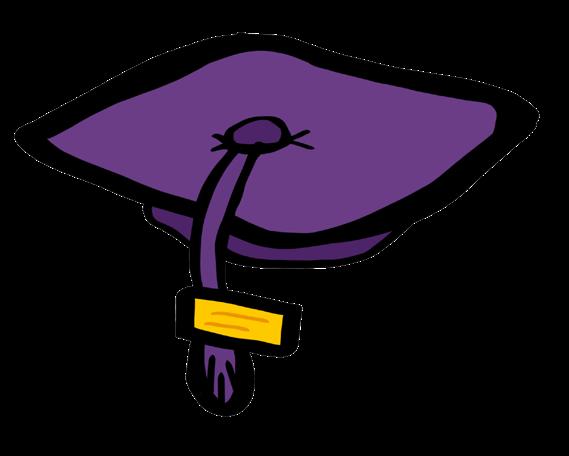




Luckily, there’s a very easy solution to this fear. Googling Sequoia’s bell schedule is an easy way to find out what each bell means and it saves the embarrassment of being seen holding a physical schedule. Just bookmark the page or google “sequoia bell schedule” anytime you need to know when a bell rings or when to go to class.
One of the biggest stressinducing events for people across all grades are finals. It is an even bigger fear for
“My freshman year I was playing waterpolo and we were playing Terra Nova, Iwas in JV and we were watching Varsityplaying. At halftime we went to saywhat’s up to the seniors and Owen Haagawent to dap up one of the seniors whenhe was in the pool and he got pulled in thepool fully clothed with his phone in frontof everybody. It was pretty funny.”
“I walked into my English class and the teacher thought I was a senior so he said nothing. All the kids were seniors and the teacher didn’t notice I was not in his class until 45 minutes in and he kicked me out. He kicked me out and I had no clue where to go so I missed my first period on the first day of school.”
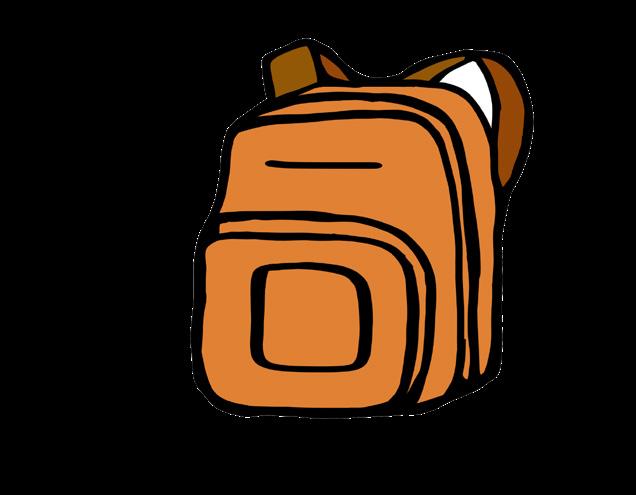
6 October 2022
my name is Finn Moody
“I was peer pressured country as freshman. really good at it but my closest friends meet.”
my name is HELLO
HELLO
my name is Jeffrey Suruy
Your teachers are always available to help you. Email them, show up to flex, go to tutorial for math. No teacher will say no if you ask for help.
Spend freshman year figuring out what you like and don’t like but no pressure to commit to something!
“When I was a freshman I joined thissuper boring and hard elective classbut I was way too afraid to drop itended up sticking it out. By the endthe year it was my favorite class and am still in it as a senior.”
my name is Hope Callaghan HELLO
incoming freshmen as most middle schools either have small, insignificant finals or don’t do finals at all.

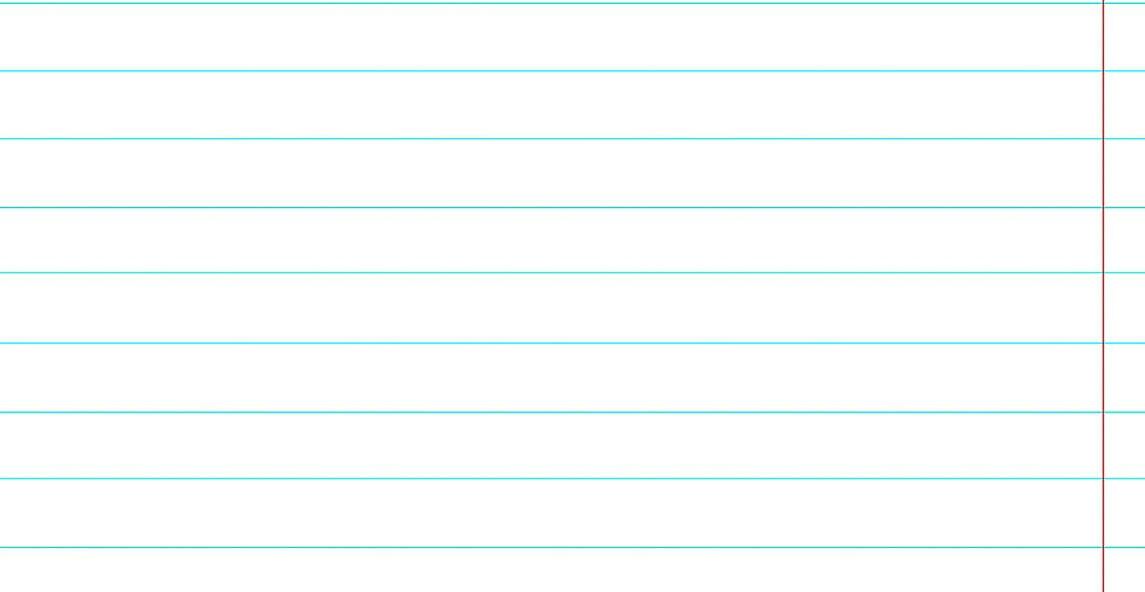
Unfortunately, this isn’t the case in high school.There is an idea that finals determine most of your grade for a class and while this sometimes is true, it is actually less scary than you think.
“We would give students a lot of prior notice to the finals, back before the finals and so that they would know what to expect. We give them time class time to prepare, and work in groups,” Theory of Knowledge teacher Justine Rutigliano said.
The first thing you should know is that all teachers at Sequoia are easily accessible outside of class through flex or email, so if you are ever struggling with a topic, always go to them for help.


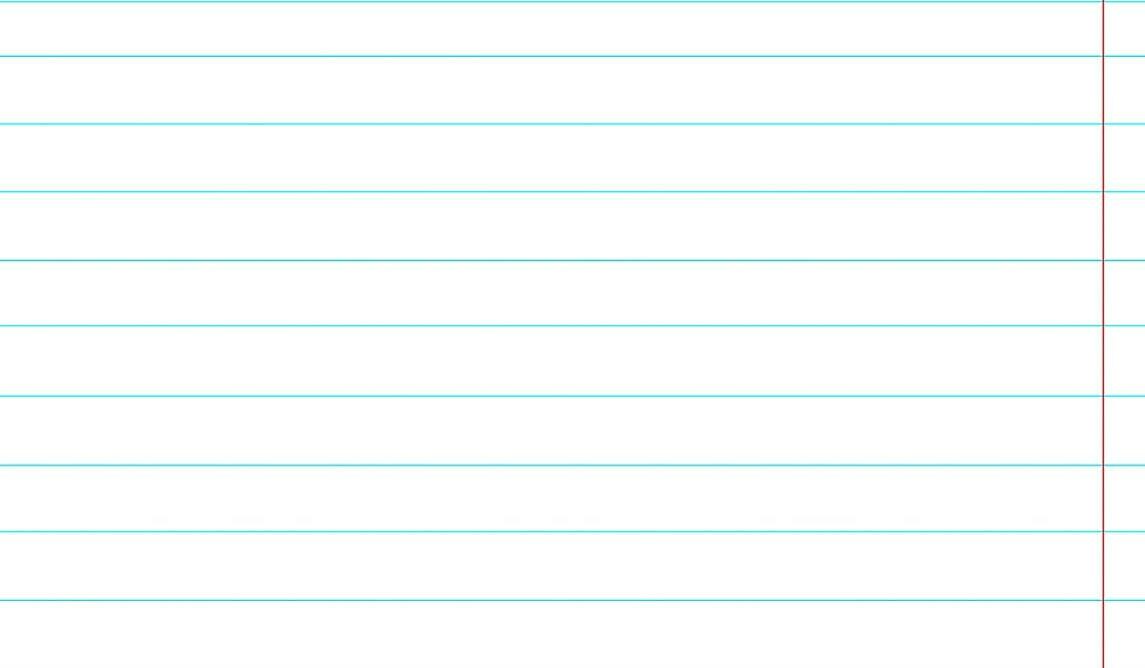
“I think teachers at Sequoia set students up for success. We are very much in favor of you guys succeeding,” Rutigliano said.
Finals are normally worth 10-30 percent of your grade, which can actually be really good for you. Instead of thinking about finals as something that will tank your grade, see them as an opportunity to raise it. You have at least three weeks to prepare for a final which, if you do well, can normally increase your grade more than it can decrease it.
Another fear shared among the staff is IB. The IB program attracts students who are looking to boost their
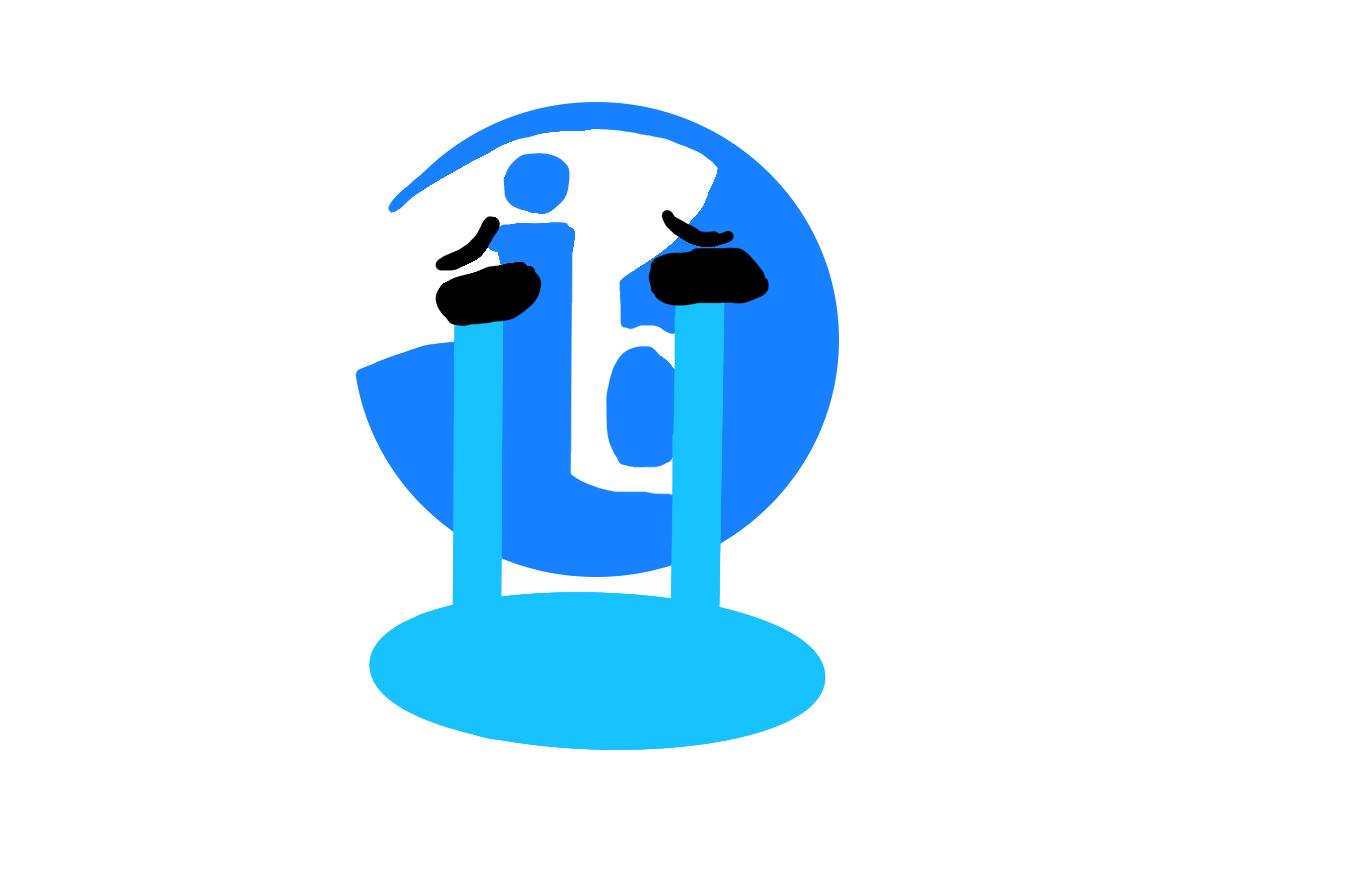
their college applications, but many students feel unprepared to embark on such a rigorous path. All
creating your own subdeadlines like when to have a certain section of an essay done can be really beneficial for time management and will allow you to feel less stressed when you finish these sub-deadlines.


“First day of Algebra 2 trig, I wassitting in the back of the room ona bar stool with a group of threeother juniors, I was trying not to be“that freshman”. After the first test,everyone dropped the class and I had agroup to myself. I didn’t need to worryabout being “that freshman” anymore.

put on each class falls the hardest on freshmen as they are the most insecure about their position on campus. As the high school life cycle continues, those same tiny ninth graders eventually become the big and scary seniors. They come to realize that what the freshman do with their new position on campus is not something they think about as often as their self-conscious previous selves predicted. The next four years of your high school life has just started, so own it!
High school life starts with Freshman year and the transition from middle school to ninth grade is a challenging one. There is so much to adjust to and the seemingly limitless social opportunities can add another layer of intensity when switching environments. Whether you come into high school with a large group of friends, a smaller one, or are coming in with a fresh start, it can be really intimidating to find your place on a new campus.
Although the massive student population is a lot to sort through, using the social resources provided by the high school environment like clubs, sports, and even just classes in general is a great way to make friends that you have a shared interest or class schedule.

Rylan Butt
pressured into joining crossfreshman. I was never but I made a lot of on the bus rides to

“My first week of school I was walking through the halls and accidentaly bumped into a junior, maybe senior. She saw that I was a freshman and sighed very loudly out of annoyance even though she was shorter than me and I’m five feet.”

October 2022 Fall Issues 7
HELLO
collegetriptoSt.Mary’sCollegeI Baywatchstartedwatchingthemorerecent andI noticedsomeone lookingatmyphonefromtheseat behind me, we moved into the same row and watched for the rest of the ride toandbackfromSt.Mary’s.Wehavebeen friends ever since then.”
“Ifeellikeyou’re probablystillgoingto stickwiththat[...]Aor thatB,”JustineRutigliano,TOK teacher
Use Canvas calendar to stay on top assignments. It automatically crosses off assignments you turned in.
my name is David Raymond HELLO
classthis
so I of and I
Callaghan
All art by Ethan Butt
The lunch line crisis
Stan Hamelin~Christine Chang~Julius Ceja Multimedia Editor~Staff Reporters
Hundreds of kids have been waiting for 20 minutes in the 90 degree heat for a packaged fajita or veggie burger. Returning to Sequoia after a break over the pandemic, the current lunch system stresses students daily due to the long wait. The simple act of typing in your student ID has significantly increased the wait and the amount of students who cut in line.
“A lot of the time, the lunch line takes way too long and most students can’t even get lunch before the lunch period ends,” junior Abel Chavez said.
The main reason the lines are taking much longer than they used to is because students must now enter their student IDs before taking their lunch. According to Stacy Starr, Sequoia Food Services Lead, this system isn’t new- it’s

students took a liking to the IDless system and are not so fond of the ID system, which takes much longer. Although there are problems caused by the students such as forgetting their IDs, the problem of the long lunch lines still stands.

“I sometimes get [the school lunch] if I get there before there’s a super long line and I know that they have something I’ll eat.
never had the kids wait outside… and there would be like two or 300 kids in here at all times and it was such a smooth line. Now since we can’t let them in here, we have to line up outside and it’s hard because of the weather… It’s really convenient to have [the cafeteria] open.”
Students propose solutions of what people can do to solve the issue of the longer lunch lines. Junior Carl Guerra, had a solution: bring your own lunch.
“Either make an ad
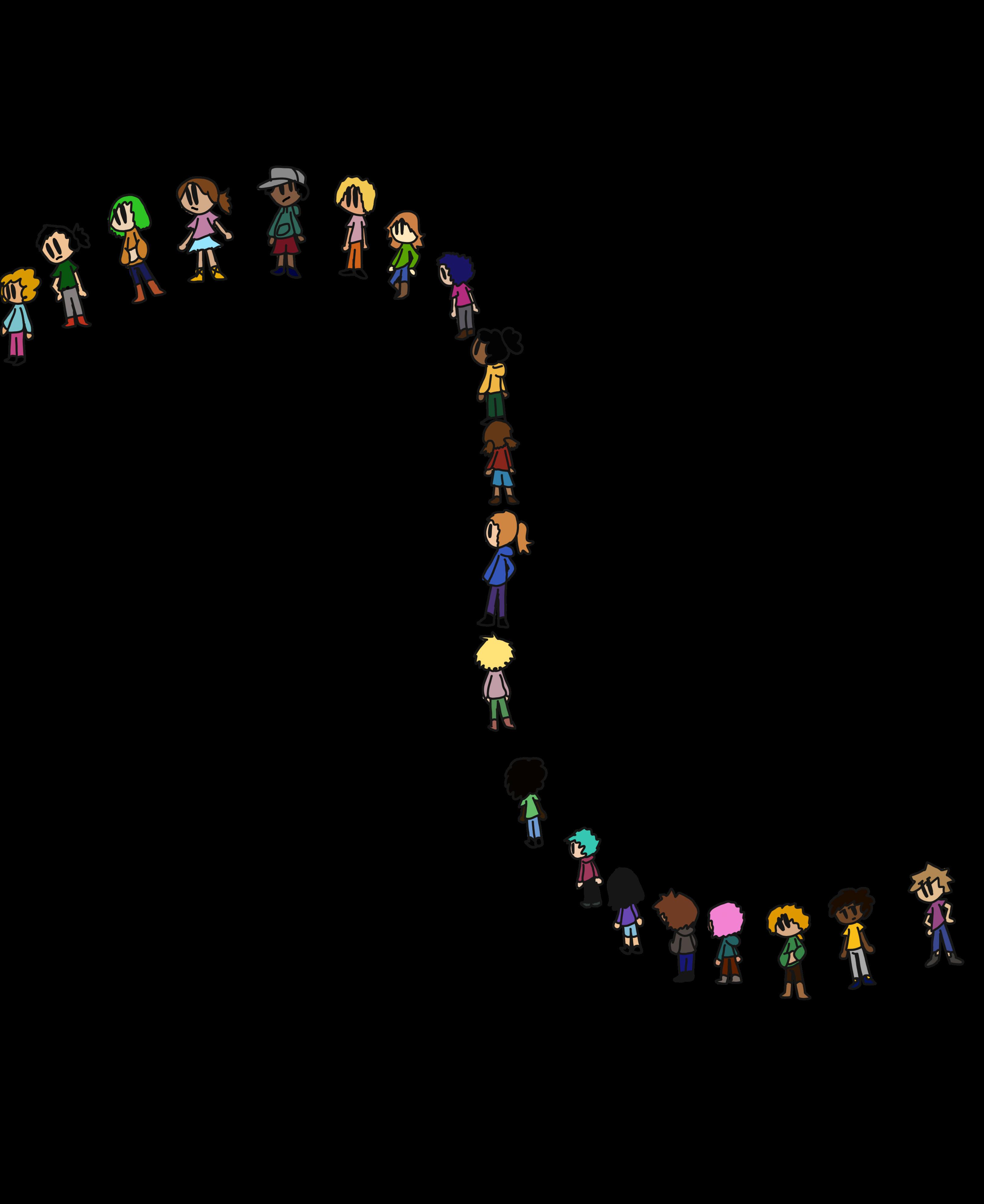
Usually I just give up and hang with friends rather than stand in line for half an hour,” sophomore Sophia Webb said.
Starr suggested an easy solution to shorten the lengths of the lines. There are in fact two more windows in the cafeteria from which food could be served, possibly making all of the lines
campaign to tell kids to bring food, or start charging them for the food so they bring their own stuff,” Guerra said.
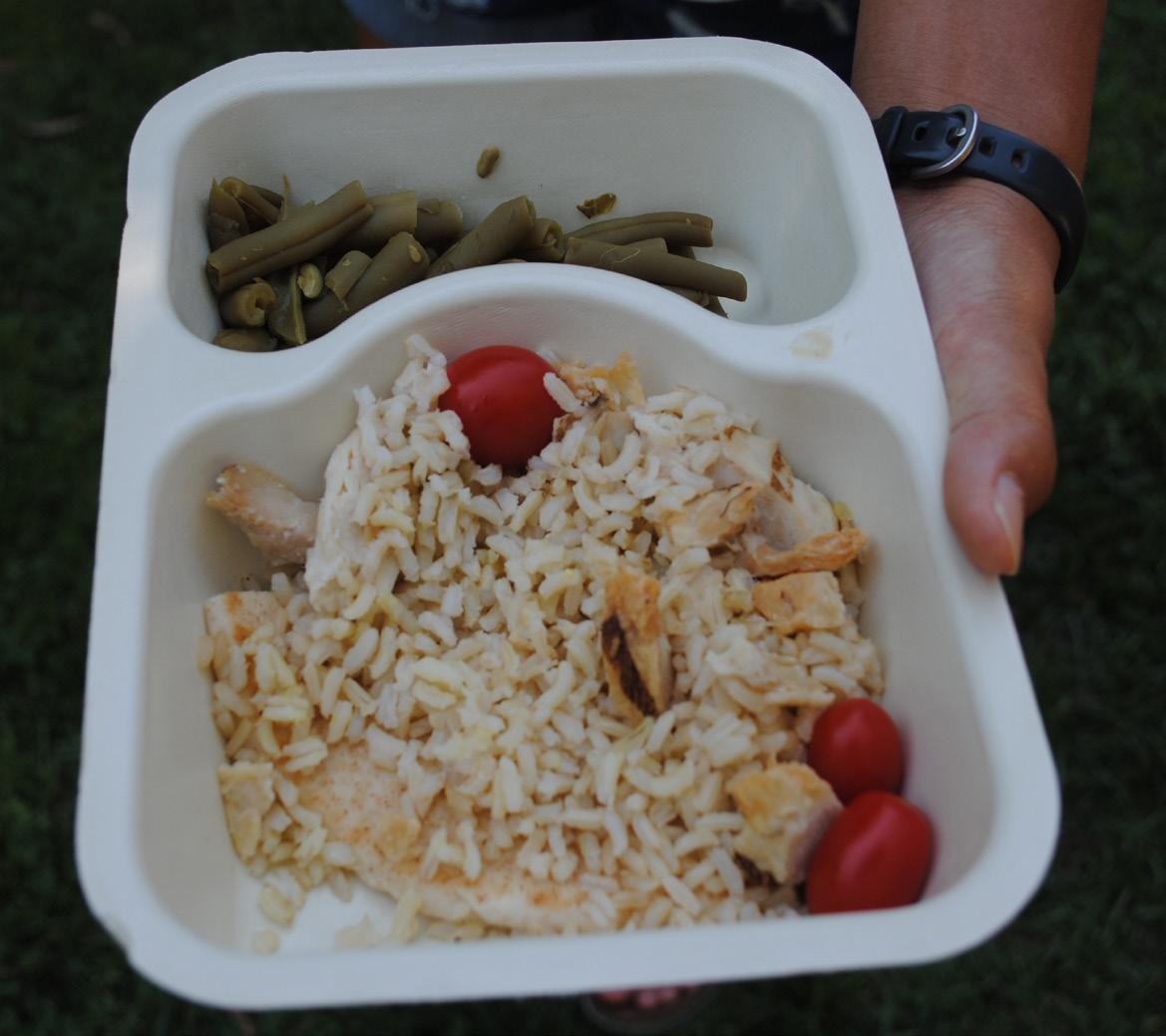
machines are locked behind the doors of the cafeteria. Most students don’t even know that they exist. Although the food and drinks in those vending machines are also somewhat scarce, it would open up a few more choices when it comes to eating and drinking.
been around for many years. During the pandemic, the Food Service had troubles with their computer system and students were able to simply walk up, grab a lunch, and sneak back for seconds. Now that the computer system is up and running again, the system of typing in student IDs before lunch strikes many students as brand new. Many
shorter. In addition, opening the cafeteria would allow for less comotion and fewer students waiting outside.
“They closed this whole [cafeteria] after the pandemic and they said they didn’t have enough campus aids… see we have two windows [in the cafeteria]. We’ve always served from there. It’s just the pandemic,” Starr said. “We
This could be a good idea, but it might stir up complications for students who cannot afford to make their own lunch, either because they are lacking time or money. Convincing students who take the school lunch out of convenience and not of need to bring their own lunches might help lessen the amount of people crowding the lunch lines. But what about everyone else?
“I don’t know what to pack and also I leave my house at like 7:10 so I’m too tired to pack,” Webb said.
There are vending machines at Sequoia, but a few of them aren’t working and the ones that do are often empty. Two vending
“They should open the cafeteria inside and open the lines there, or better yet make the vending machines useful by having them filled with food and drinks,” Guerra said.
Some students choose to cut the lines instead of waiting for what seems like ages, and although it’s good for them, it means a longer line for other students who actually wait their turn.
In addition, during the pandemic when there was no ID system, it was common to see kids sneaking back for an extra lunch, despite the fact that there is not enough food for everyone to have seconds.
“I would do the same thing if I was hungry,” Starr said. “I would
definitely encourage kids to come for my extra food because we weren’t meant to be mandated by the state to turn in student IDs, to have the records of who we were feeding. Now they have to have a record for it to be reimbursed for the meals in the foreseeable future.”
Despite the wait, students can understand the reasons behind the system and why it takes so long. “I think that it takes a lot more time, but I understand why we have to do it. So that people can only get one lunch at a time. So there’s enough for everyone,” senior Claire Sarrail said.
Perhaps the school administration is unaware of the problems the current lunch system is causing. However, there are several solutions that could lessen the problem. Through all the complications, the food service is still doing its best to serve the students of Sequoia.
“We are still giving a free meal to every single student, one for breakfast and one for lunch,” Starr said.
8 October 2022Fall Issues
Lunch lines at Sequoia consumes too much time and provides not enough food
“Most students can’t even get lunch before the lunch period ends.”
Abel Chavez, Junior
Photos by Christine Chang
Art by Julius Ceja
Photo by Stan Hamelin
Transportation troubles
Allison Wang ~ Amara Bakshi ~ Caroline Sieling Copy Editor ~ Staff Reporters
Homeowners in the Redwood City community are upset by the lack of respect Sequoia students have toward speeding laws in residential streets.
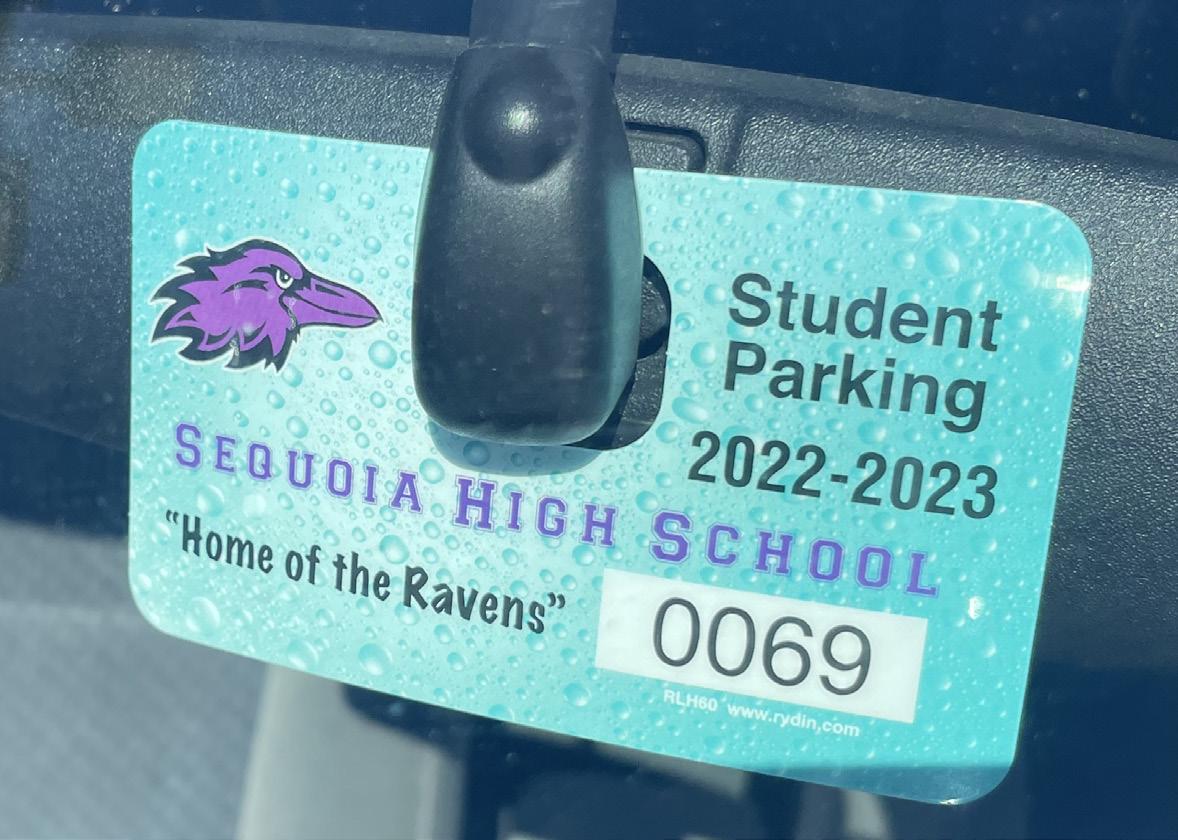
“There are huge safety issues in play. We have pedestrians, bicyclists, and homeowners. Everybody needs to be able to get to where they are going safely,” Mary Jensen, a Redwood City resident and Sequoia alumni said. These homeowners are inconvenienced by the way Sequoia students and parents speed down parallel streets. Since they are used as through streets to
Impatient drivers Parking permits
Fighting over parking is the first battle 450 seniors and 427 juniors are confronted with upon arriving
get to the other side of busy roads, there is a frequent amount of speeders going down those streets when students are commuting to school.
“I’ve seen people crack over 45 on our streets when the law is 25,” Chris Jensen, a Redwood City resident and Sequoia alumni said.
One reason the residents are annoyed is the lack of responsibility of the city and the school’s education towards young drivers. No one is being held accountable.
“I think a lot of people are driving badly… because there’s no
consequences for them,” Jensen said.
One solution to fixing these problems is adding radar speed signs, yet there are more problems emerging from this situation. When these signs are added, some drivers may try to drive fast as possible.
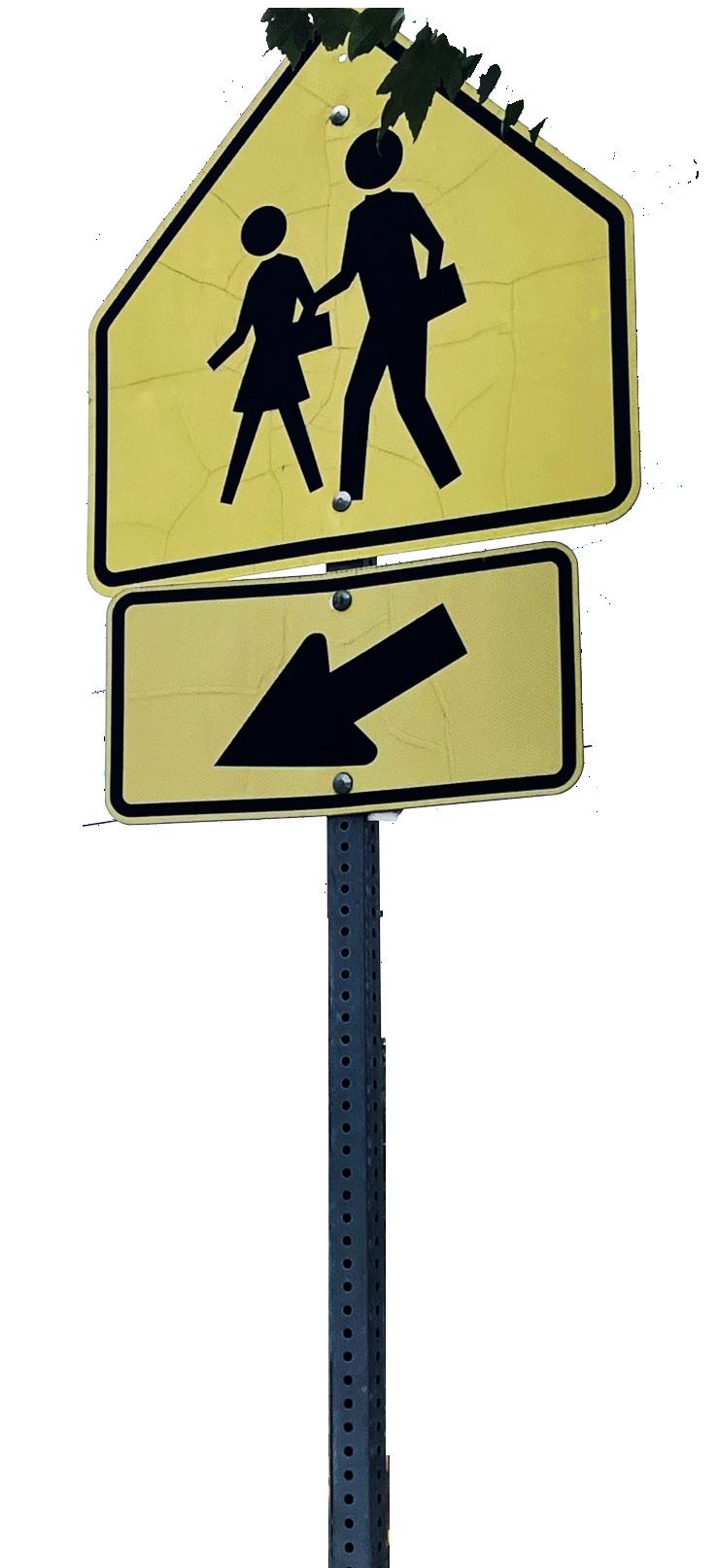
No one is taking the homeowner’s opinions into consideration whose main focus is preventing someone from getting seriously injured, before it actually happens.
“If someone gets hurt, then that’s when [the city] starts to pay attention. But why does that [have to] happen before we do something? We always tend to be reactive rather than proactive,”
Jensen said.
Sequoia administration does recognize this problem throughout the community.
“Someone’s speeding, that’s a ticket! … And then when they don’t pay it, raise the price of the ticket…and then maybe they won’t speed,” Gooch said.
The problems of speeding within the streets of Redwood City are still happening, even if both sides acknowledge
intersection [Elwood and Brewster]... because no one can see [the crossing guard] and no one can see other cars,” freshman Calvin Lundell, a cyclist, said.
that it needs to be fixed.
“People always speed whenever they think they can get away with it. As long as they think they can get away,” Jensen said.
conflict of whether they risk being late to class or having to plan around traffic issues and leaving early simply to avoid the chaotic environment.
“I definitely know that some people have been late to class because they can’t find parking nearby and teachers tell you to just leave a little bit earlier, they don’t really have any sympathy,” junior Cassandra Chin said.
A constant rivalry for parking spots is not the ideal morning for Sequoia drivers, though this is the reality of trying to park around Sequoia.
“Often I see other juniors and seniors parked on the same street all at the same
time. And it’s nice, but at the same time, it’s kind of a competition… Also you have to deal with the people who live on that street; you

Students returning from summer are immediately met with issues before even stepping onto campus when confronted with chaotic traffic policies and concerns of safety, these issues distract from academic struggles and leave students with many non-academic school stresses.
Throughout the day, students who get to school by walking and biking get a firsthand look at the traffic laws around Sequoia’s campus, though many solutions are being proposed.
“Put a stop light at that
Stop signs may seem like the perfect solution, though the lack of regard for traffic enforcement may not be as helpful as it seems.
“I would like them to
Rules and guidelines such as speed regulations can be very helpful to those walking and biking, yet it is not an easy job to enforce these rules.
“You have to have an awareness and a confidence to do it and you have to have a willingness. They tried five other guards before me, all have failed,” Gary Turon, Sequoia crossing guard, said.
Offenders who disobey traffic laws do not get away without punishment when it is reported that they are putting others in danger.
drive a little slower and not ‘California roll’ right through the stop signs…” freshman Lucia Nino-Sears said.
“If there are any repeat violators I make the police aware of, what I’m looking for is somebody that is dangerous, [and] disrespectful [to] people… if that goes on they’re going to eventually be called on it,” Turon said.
cover money with asphalt anymore. You want to pave over three acres that are worth on the market now in this city around seven or eight million and you want to put cars there,” Gary
Gooch, administrative vice principal said.
Hiring staff to help with traffic management isn’t easy on the school either.
“There is one [crossing guard] here now. Anytime we employ someone that has to be out there, the liability is huge… these things that we would have to do take away from money we spend on education,” Gooch said.

With the city being a main part of enforcing rules around traffic, many people would propose bringing up the issues of irresponsible drivers with the city, though they have not responded so urgently in the past.
“It took lots of complaints to get the city to do anything about [the crossing of Elwood and Brewster],” Gooch said.
October 2022 Fall Issues 9
“They tried five other guards before me, all have failed.”
Gary Turon, Sequoia Crossing Guard
Traffic management
“I’ve seen people crack over 45 on our streets when the law is 25.”
Chris Jensen, a Redwood City resident and Sequoia alumni
Left photo by Amara Bakshi, edited by Allison Wang Bottom left photo by Caroline Sieling Bike graphic by Adobe Stock, edited by Allison Wang Bottom right photo by Hope Callgahan
Abigail Aguayo ~ Alex Parker Rogers ~ Nicholas Lawrence ~ Anjali Govoni Graphics Editor ~ Staff Reporters

Hectic. Stressed. Overwhelmed. Bored. Sequoia High School has always encouraged, additional and often more rigorous programs like AVID, IB and the Academies. While they have drawn in many, not everyone fits into this mold, and there are some students who have dropped these classes for reasons that are not often discussed.
Four prominent programs students often drop out of are AVID, DAA, IB and HCA. Since all of these programs have different requirements for students, many drop these programs for various reasons. Students have specific interests, and while these programs are designed to suit them, Sequoia programs do not always fit with the changing needs of a Sequoia student.
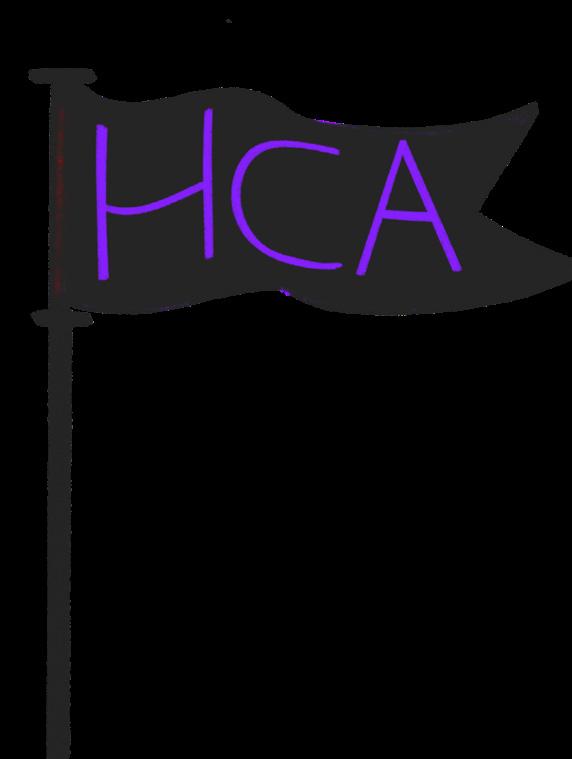
Some students simply had a change of heart after deciding, and others learn of new ones later on that they want to join instead. All of these programs require some schedule changes and if students are interested in different classes they may need to prioritize one schedule over the other.
programs into these tracks has unintended consequences.
“I found out about [Digital Arts Academy], I think in a
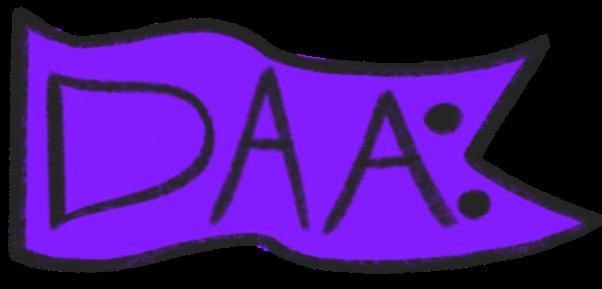

excessive. These aspects of AVID can push many students away and they do not see the worth in staying in a class for two years in order to actually get any real gain from it.
Unlike AVID, the appeal of the IB diploma is its intense workload, the reality of which is often too intense for some students. The IB Diploma demands a new host of activities for students, including the Extended Essay and mandated extra-curricular hours. Despite the workload, many people still enter the IB Diploma every year, presumably because it’s so difficult, and colleges know and recognize it as such.
penalty on their transcript. This means students who decide to add a course may miss up to seven weeks of their new class. This is challenging for teachers who must accommodate new students, while also supporting students they’ve had since the beginning of the school year.
Lauren Yurkovich, IB Art and photography teacher discusses how this issue impacts her as she has many students who drop IB visual art and transfer into one of her other classes (typically photography) in order to still receive art credits.
feel it would be unfair to students who have been in the class since the beginning of the school year, to give them the same grades as recent transfer students. As a result, new students may end up with lower grades.
“I ended up dropping it [DAA] because I wanted to take the IB diploma and that required me to take all IB classes so I had to drop it in order to get the IB diploma schedule,” junior Kyle Appleby said.

This is a common theme amongst those who have switched programs, that their ambitions as freshman change over time. One possible response to this issue is that Sequoia is making its students choose their tracks too fast. Many freshmen students come into Sequoia without a lot of information on what will truly fit them at a new, larger school, so heavily encouraging students that may not know much about these
is echoed in AVID.
Many students may initially think of AVID as burdensome, however, “[during] these ninth and tenth grade years, [students] are building connections with people in the class with their teacher. They’re building skills,” Scott Stalder-Skarmoutsos, a Spanish and AVID teacher said. This emphasis on community building and foundational work can often estrange students from the class, since it is not seen as inherently productive. Many students simply see the early years of AVID as superficial and not needed; AVID does not help them in achieving many of their goals.
“A lot of freshmen, sophomores, or juniors are like, I love the community. I feel really welcomed. I feel connected. I feel like it’s a good, safe place. But then, okay, I’m getting behind on my Cornell notes. I don’t feel like I’m getting enough notes in my classes. It’s more work. They don’t see that,” Stalder said.
Focusing on long-term strategies can be seen as annoying for many AVID students. Many students often become exasperated with the demands that the class gives them and they view the extra requirements of AVID, such as Cornell notes, as

“I think taking IB courses is a very attractive prospect for your transcript. So people want to show that they’ve taken the most rigorous course load possible” Ms. Snow said. “I think the IB diploma is for this special student who really is self motivated. And that’s where we’re finding this tension. Are the kids actually motivated to do the IB Diploma or other external forces telling them they should?”
“So on one hand, like you’re trying to get kids to stick with that rigor, the rigor of an [IB] class, you know, on the other hand, if they do drop it, it’s a problem for them coming into a new class, but it’s also problematic for the teacher…” Yurkovich said. “When kids come in 7 or 8 weeks late, they’ve missed all the basic computer functions, all the basic Photoshop… and now I’ve got someone who knows none of that,” Yurkovich said.“Especially for elective classes, what’s challenging for us is that we’ve got all four grade levels. Plus we also have all the different types of special needs.”
Students also struggle after entering a class late. Teachers try to be understanding, but some
“If you don’t learn some of this [fundamental] stuff, how are you going to be successful in the class? And what’s interesting is when I’ve tracked kids in my classes, specifically, the longer they wait to transfer in, the less successful they generally are in the class as a whole.” Yurkovich said, “so if you transfer after the first like three weeks your chances of being successful are high, but your chances of your grade being a C or D or F dramatically go up with each week that you come in later.”
Art by Alex Parker Rogers
After dropping a class, students have the choice to keep the period free or transfer into a new class.
Sequoia’s drop policy requires students to drop their classes before September 30 to avoid a
10 October 2022Fall Issues
“Are the kids actually motivated to do the IB Diploma or are there external forces telling t hem they shou ld?”
Elizabeth Snow, Media Center Specialist
Students are dropping high commitment courses and here’s why
Our campus - on shaky ground
Renovations in progress and in need
Sequoia’s campus has a long and storied history. Originally built in 1924 using a Spanish Colonial style, the campus has since grown to encompass the entire area between James Avenue and Brewster Avenue. However, despite these additions to the Sequoia campus, the infrastructure of some of its older buildings has not seen as much attention and care. Currently, though, the main building has undergone construction in one of its oldest areas, the breezeway. We spoke to Gary Gooch, Sequoia’s Administrative Vice Principal to find out more.
“The point of those renovations are to replace antiquated HVAC systems, which is heating, ventilation, and air conditioning. The system that was in there [...] was installed in 1983,” Gooch said. He explained that the age of the system wasn’t the only issue. “It not only doesn’t work, I think it might’ve been leaking some freon or something like that,” Gooch said.
The renovations have been
going on since the Monday after graduation, and they were supposed to be done by Aug. 17.
“[The construction company] claim[ed] it [was] going to be done on the 23rd of September, [but he said he] took a little tour through the construction area and [thought], ‘no, you’re not going to be done,’” Mr. Gooch said.
He then went on to describe an issue Sequoia constantly faces.
“One of the things that is not so great about having a really beautiful old school that has vast grounds and trees [...] you constantly have to work on it [...], It’s falling apart, [...] You know, there’s molecular degradation taking place. And so you have to come in and fix things that break and so that’s where a lot of the money will go,” Mr. Gooch said.
This won’t be the last construction project at Sequoia.In addition, there isn’t enough space at Sequoia. To help this problem, there is a bond measure going on the ballot in November, which is where schools go to the taxpayers and ask for more money to be allocated to the district.
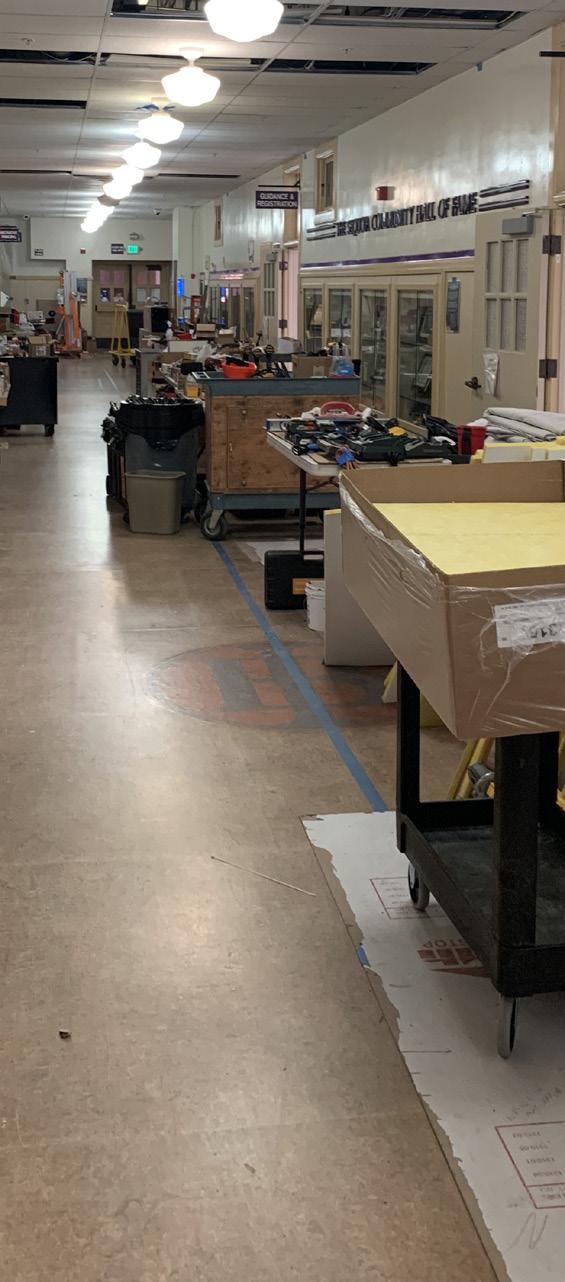
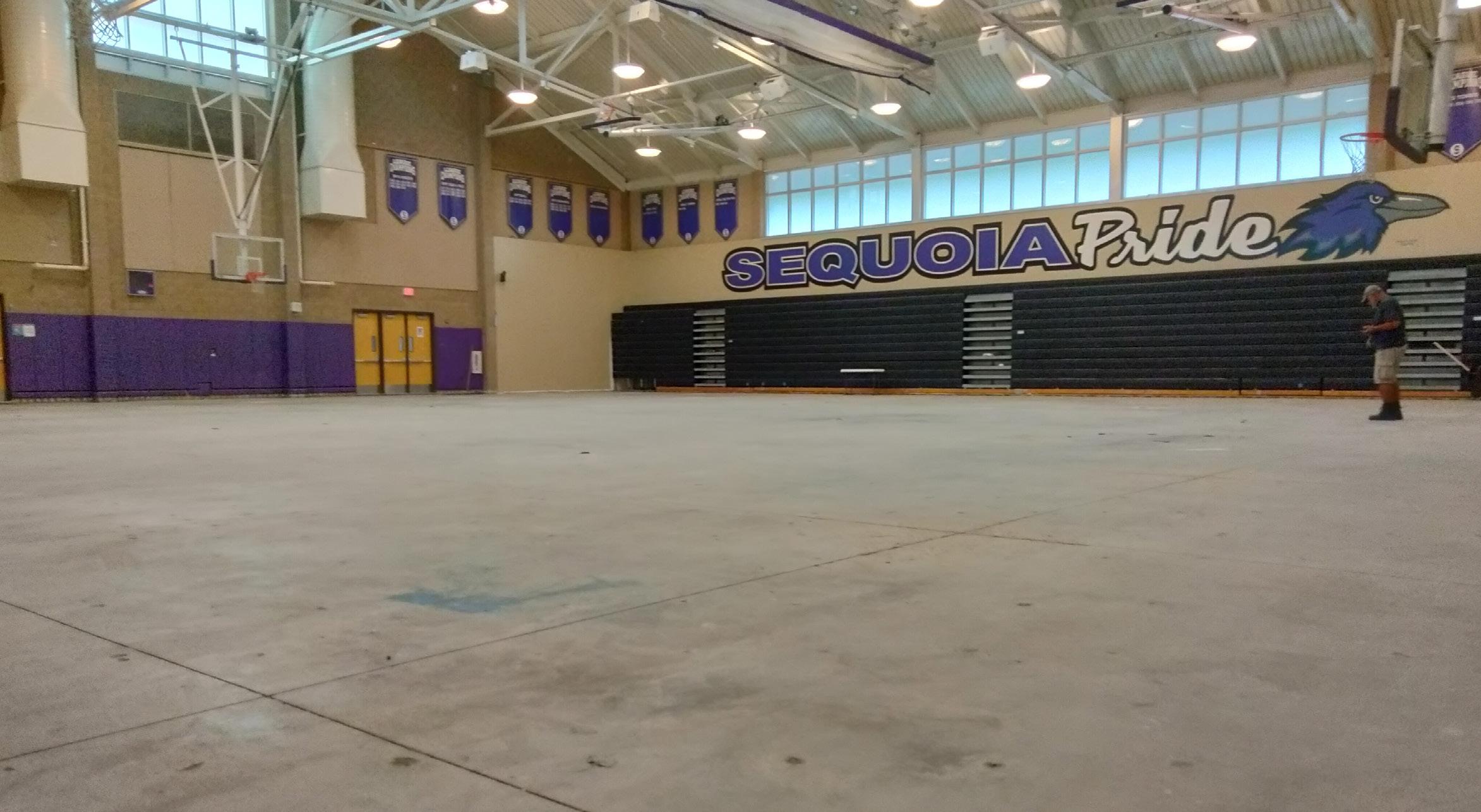
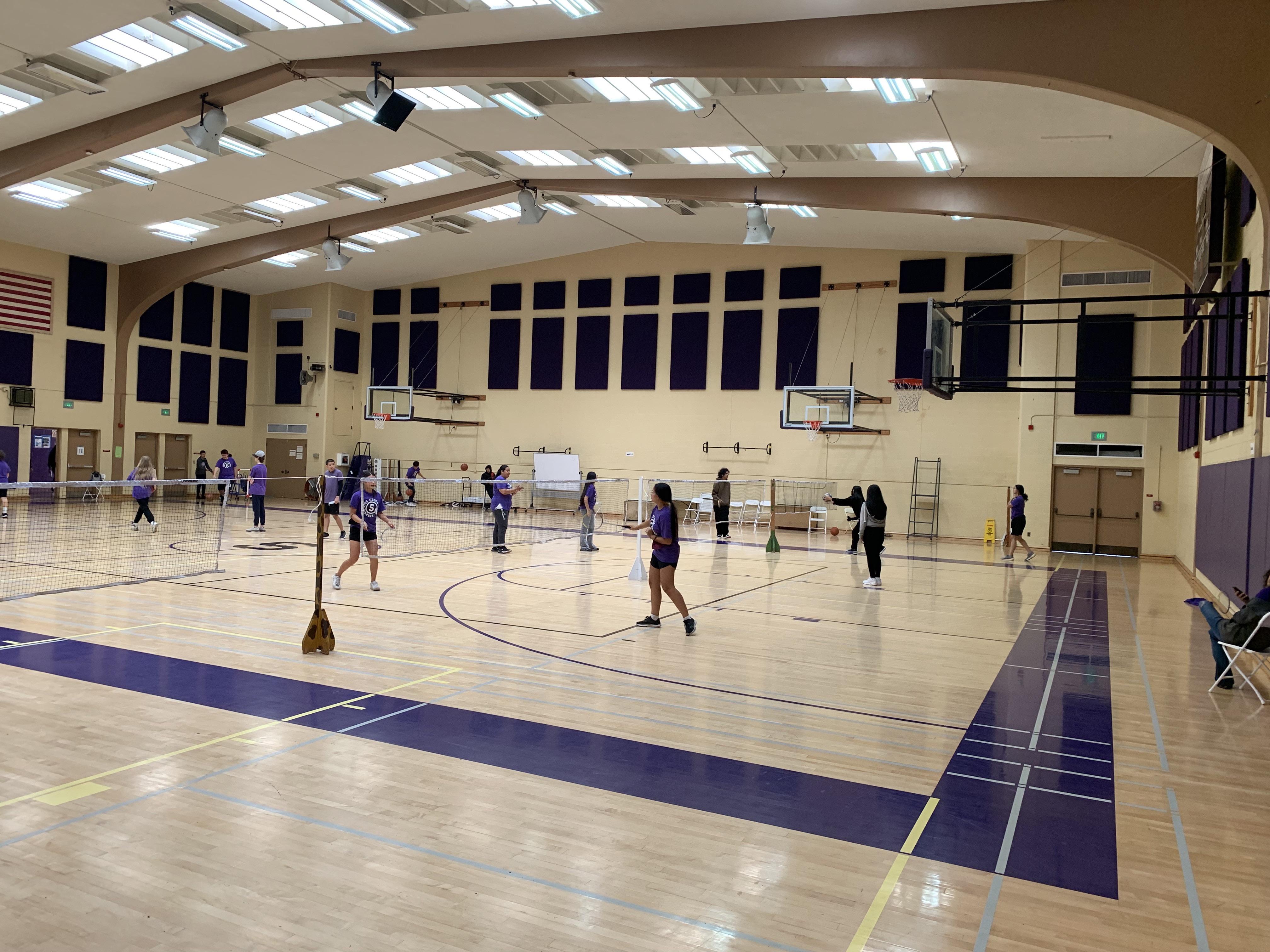
Another issue Mr. Gooch brought up was the issue of heating and cooling.
“We struggle at Sequoia with having cool air when we need it and warm air when we need it [...] the heat comes from radiators from the 1930s. [...] It’s 85 degrees in a classroom or more, and how are we going to address that? So that would have to be a massive HVAC remodel for this 1924 building. [...] To do anything in [the main building] to retrofit it for air conditioning [would] take an act of God.”
Because this school is nearly a century old, doing any work on it is hard, “any work that would be done on the outside of the facade, we’d have to return it exactly how it is now.” To preserve
the architectural integrity of the building, they would have to rebuild it exactly like how it was before.
Students have had different experiences with construction in the buildings. Some were not very affected by the renovations.
“For the most part[…]I’ve just been sticking to the usual route that I’ve been taking,” freshman Sarah Driedger said.
Students who have been on campus for longer were more annoyed by the shut down hallway and staircases.
“It kind of takes you out of your way, more than it would to just cut through the building,” junior Ian Holt said. Other students were more deeply affected by the closure.
“It makes me feel kind of gloomy when I go and walk through the hallway and just see it kind of shut down,” junior Ally Garay said.
During the recent heat wave, when temperatures reached over 105 degrees on a few days in September, concerns were drawn to lack of AC in some classrooms. A few class locations even had to be changed last minute. Many of the students expressed concern about AC.
“Oh, yeah, we need air conditioning […] especially everywhere in [the main] building. It’s really bad. It’s really, really bad.” Ally said “the ratio is really off […] Some classrooms have really good AC and some don’t have it at all” Holt said.
Gym one’s construction has been going on since summer. Given that these repairs started in the summer, many students are unaware and wondering why these constructions are happening and how long they will last.
Fine Lauese, Sequoia’s plant manager has been overseeing the repairs.
“It’s a little bit of everything […] It’s a little bit of facility maintenance, to make sure the swimming pool is taken care of, lights [and] gyms. Basically, make sure it’s suitable for students to come in and get their education.” Fine said.
The construction is not only for the safety of the students but also the integrity of the building, floors, and things like that.
“Over the summer we had a pipe that burst so… between then just a lot of water” Fine said.
Last he heard, the gym one repairs should be finished by November.
1914: Land owner Albert Pissis dies, land goes to his wife
1920: Mrs. Pissis sells land to school for $80000
1923: designed first part of main building and auditorium built 19281929: new wing (rooms 150-160), cafeteria added 1941: El Camino Real entrance made
1949: Science wing and DAA Wing added
1958: LL wing added 1960: pool built 1985: Sequoia added to na tional registry of historic sites 1989: pool renovated1991: El Camino Real entrance restored

October 2022 Fall Issues 11
“It’s falling apart[...] it’s molecular degredation taking place.” Gary Gooch, AVP
Markus Mukherjee ~ Mateo Mangolini ~ Minou Ono ~ Adam Trinklein Feature Editor ~ Staff Reporters
Photos by Markus Mukherjee
Photo by Adam Trinklein
Photo by Adam Trinklein
Announcements
Want to join Latino Student Union?
Latino Student Union is a club that prioritizes unity and cultural celebration/ appreciation. We strive to provide a safe space that is welcoming to all members. Our main goal is to make our community feel seen, heard and included. We aim to bring together the various ethnic groups within the latino and hispanic communities and explore our heritage and culture. we fundraise for our big school wide events such as our Dia De Los Muertos event and the Ritmo Latino Fiesta. We are here to support the students in the latino community. Meetings every wednesday in room 219.
Want to join March For Our Lives?
Through common-sense gun reforms and social services, March for Our Lives Sequoia Union demands bold action to end gun violence.
Members support the mission through practical letter writing, educating themselves on politics, hosting webinars, and promoting campaigns.
Sequoia students founded. Even though March for Our Lives is a national organization, the district chapter spreads the March for Our Lives agenda on a local scale.
Weekly meetings Tuesday during lunch in room B4



Want to join Key Club?
Want to join Black Student Union?
BSU is a club committed to cultural, social, and greater ra cial/ethnic representation. We focus on building awareness, education, and a new level of consciousness about being Black in today’s society while also celebrating Black joy. BSU is a great inclusive community and we collaborate often with other BSUs at neighboring schools. We also collaborate with other student unions at Sequoia, such as the Latino Student Union and the Poly Club. We meet on Thursdays at lunch in the Tea Garden Conference Room, where food is provided. Everyone is welcome to join and we would love to have you there!
Do you need service hours? Do you want to diversify your resume? Come join Key Club! We meet every other Thursday in the SAC during lunch. Key Club is the oldest, largest, and most successful non-profit student-led organization for high school students that strives to make a better world through service such as volunteering around the community and fundraising for charity. By doing so, our members build character and develop leadership, and become part of a safe and welcoming com munity of people who share the same drive and heart to serve. Interested in joining? Come to our lunch meetings, join our Remind by using the class code @aquaapes or texting @aquaapes to 81010, and follow for more on our Instagram @seqkeyclub. To find all of our events, check out our Linktree: linktr.ee/SequoiaHSKeyClub. See you there!
Want to join Comic Making Club?
Do you like reading comics? Do you like making art? Do you like to create your own stories! Then join the Comic Making club where you can read, learn about, and create comics! The club will teach you all about making up your own characters and storyline by studying comics from the web as well as physical copies of personal and worldwide favorites, from American superheroes to Japanese manga. Most fun of all will be the chance to feature your work in the school’s very own Raven Report!
Follow our Instagram @ravenreport
words that satisfy the
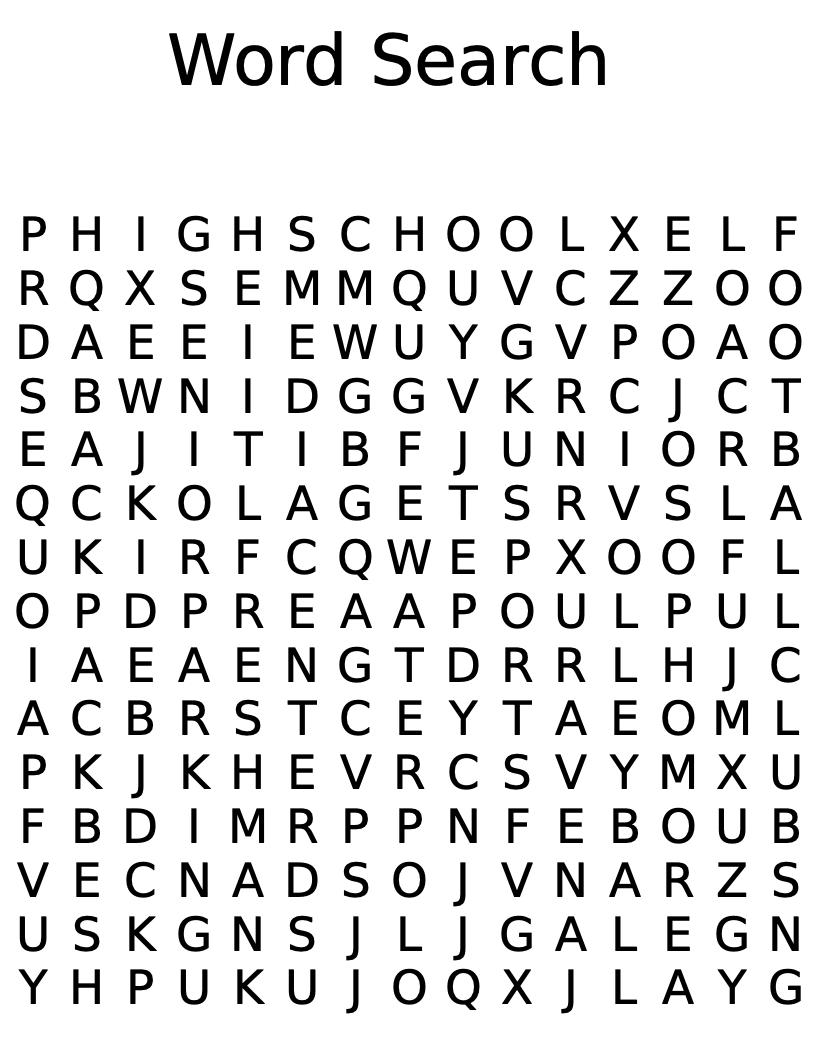
The words will go both
and horizontal
the corresponding number

October 2022 Fall Issues 12
Club Advertisements: WORD2 Find
clues.
vertically
from
PUZZLE ONE 1. Deck of ___ 2. Separate 3. Not a fraction but a ___ 4. More arid 5. A tale PUZZLE TWO 1. For turning wood 2. Kitchen garment 3. A type of fish 4. Dwelling 5. To go inside























































